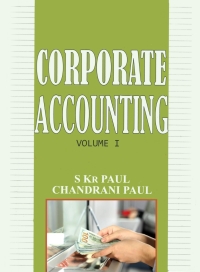Question
Download the Applying Excel form and enter formulas in all cells that contain question marks. For example, in cell B34 enter the formula = B9.
Download the Applying Excel form and enter formulas in all cells that contain question marks.
For example, in cell B34 enter the formula "= B9".
After entering formulas in all of the cells that contained question marks, verify that the dollar amounts match the example in the text.
Check your worksheet by changing the beginning work in process inventory to 300 units, the units started into production during the period to 18,200 units, and the units in ending work in process inventory to 500 units, keeping all of the other data the same as in the original example. If your worksheet is operating properly, the cost per equivalent unit for materials should now be $20.78 and the cost per equivalent unit for conversion should be $19.67. If you do not get these answers, find the errors in your worksheet and correct them.
Save your completed Applying Excel form to your computer and then upload it here by clicking "Browse." Next, click "Save." You will use this worksheet to answer the questions in Part 2.
Requirement 2:
Change all of the numbers in the data area of your worksheet so that it looks like this:
3. Data:
4. Beginning work in process inventory:
5. Units in process: 500
6. Completion with respect to materials: 45%
7. Completion with respect to conversion: 60%
8.Costs in the beginning work in process inventory:
9. Material cost: $5442
10. Conversion cost: $18361
11. Units started into production during the period: $12800
12. Costs added to production during the period:
13. Materials cost: $309304
14. Conversion cost: $777923
15. Ending work in process inventory:
16. Units in process: 400
17. Comepletion with respect to materials: 40%
18. Completion with respect to conversion: 60%
If your formulas are correct, you should get the correct answers to the following questions.
(a) What is the equivalent units of production for materials?
(b) What is the equivalent units of production for conversion?
(c) What is the cost per equivalent unit for materials? (Round your answer to 2 decimal places.)
(d) What is the cost per equivalent unit for conversion? (Round your answer to 2 decimal places.)
(e) What is the cost of the units transferred out? (Round your cost per equivalent unit to 2 decimal places.)
Requirement 3:
Either print a copy of your worksheet or make a copy of the worksheet in your workbook before proceeding. You will need to refer back to this worksheet.
Change the percentage completion with respect to conversion for the beginning inventory from 60% to 25%, but keep everything the same as in Requirement 2. The data area of your worksheet should now look like this:
If your formulas are correct, you should get the correct answers to the following questions.
(a) What is the equivalent units of production for materials?
(b) What is the equivalent units of production for conversion?
(c) What is the cost per equivalent unit for materials? (Round your answer to 2 decimal places.)
(d) What is the cost per equivalent unit for conversion? (Round your answer to 2 decimal places.)
(e) What is the cost of the units transferred out? (Round your cost per equivalent unit to 2 decimal places.)
(f) Which of the following statements are true? (You may select more than one answer. Single click the box with the question mark to produce a check mark for a correct answer and double click the box with the question mark to empty the box for a wrong answer. Any boxes left with a question mark will be automatically graded as incorrect.)
- In the weighted-average method, the percentage completion of beginning inventory has no effect on the equivalent units of production.unanswered
- In the weighted-average method, the percentage completion of beginning inventory has no effect on the cost per equivalent unit.unanswered
- In the weighted-average method, the percentage completion of beginning inventory has no effect on the cost of the units transferred out.unanswered
Garrison 16e Rechecks 2017-10-13, 2017-10-25
Step by Step Solution
There are 3 Steps involved in it
Step: 1

Get Instant Access to Expert-Tailored Solutions
See step-by-step solutions with expert insights and AI powered tools for academic success
Step: 2

Step: 3

Ace Your Homework with AI
Get the answers you need in no time with our AI-driven, step-by-step assistance
Get Started


